25 July 2007
Day 26
Today I met with Ann Wylie, PhD, Senior Tutor at the KCL Undergraduate Medical School. We enjoyed a long discussion about her efforts to teach health promotion to medical students in each of the 5-years of training. She has some rather innovative methods, in my opinion, of exposing medical students to some of the ecological issues of health and the difficulties and strategies for changing risk behaviors. I don’t believe we have anything like it in the States, although my direct experience with medical education is limited.
What I liked about her approach is that it was a way of helping practicing physicians to be aware of population health promotion and developing support in that sector. We also talked about the possibility of including social marketing in that curriculum as a way of building support for the strategic program into the future. Although I am still struggling to fully understand the structure of government, public health and academic sectors in England, we talked about the position of the Faculty in Public Health (and the Voluntary Register) as well as some of the other organizations involved, such as the Association of Study of Medical Education (ASME), the Association of Medical Education Europe (AMEE) and the Society of Academic Primary Care (SAPC)---about their position on social marketing. I think it’s fair to say, they don’t have one.
Here again, I think there is a valuable opportunity to garner strategic support for social marketing in primary care medicine and medical education. I believe key academic partners are willing to play a role (and seem to have a strong strategic position in the relevant organizations) but would need support from NSMC and other partner organizations. A more informed discussion with her, perhaps a presentation to one or more of the relevant groups, an article in one of the professionals journals (Health Education Journal?) and some other activities would go a long way to making this possibility a reality. I can’t imagine a more powerful, strategic support for social marketing in public health than to have the understanding and support of primary care professionals—especially corps of new physicians (the KCL medical class alone is more than 400 each year!) over the next decade or so.
Also, I plan to take some of these ideas back to Brown with me and talk there about the possibility of including social marketing (along with health promotion in general) in the medical curriculum. (See A. Scott-Samuel and J. Wills in Health Education Journal, 2007:66, 115 for an article: “Health Promotion in England: sleeping beauty or corpse?”
Metropolitan PCT site visit (Hamlet Towers):
At an earlier meeting, one of the associate staff at a local PCT offered to give a tour and site visit. Linda joined me and we set off on the tube for the East London area known at Whitechapel. I knew something was radically different when we emerged from the station into a busy street filled with sidewalk merchants and people of every conceivable nationality or ethnicity. There were turbans, sarongs, burkas, shorts, robes etc., etc., reminiscent of a busy street in Cairo or Istanbul—hardly what I expected in London. Our guide explained that 40% of the population in this area is Muslim (from various countries) with white Britishers accounting for another 40%. The remainder comes from all over the world and settles here due to the more reasonable living costs (compared to downtown London). After only a few moments, we passed across the street from the London Mosque which was broadcasting the call to prayers throughout the neighbourhood.
This is also the world of Sherlock Holmes, Jack the Ripper and alas, the start of the Salvation Army (of which my parents were officers). We explored the narrow streets filled with restaurants, shops and artists only to emerge on the edge of the financial district and below a unique building widely known by the nickname "The Gherkin." It is 180 meters (590 ft) tall, making it the second-tallest building in the City of London. I like to think of it as the “lipstick”—but that’s just me.
So we walked through the open markets, back alleys and broad avenues trying to soak up some of the diverse culture of the area. I didn’t directly observe any desperate poverty, but can only imagine some of the issues that exist in the vast expanses of public housing and tenement towers. It was more difficult to imagine trying to promote health in an area with so many different languages and cultures. But our guide persisted in pointing out the richness of the culture and the essential energy of the population crowding the streets. Perhaps this reminds us that while health is certainly one of the most valued things, it is not the only thing that matters…..
##
Wednesday, 25 July 2007
Subscribe to:
Post Comments (Atom)

















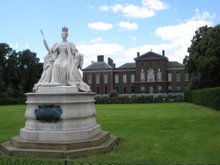
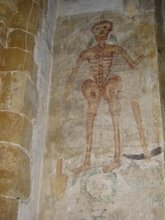
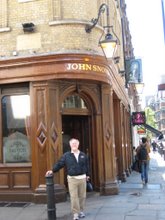
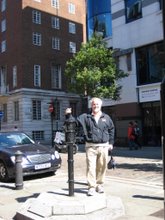

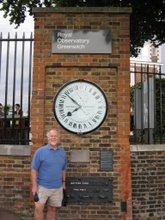
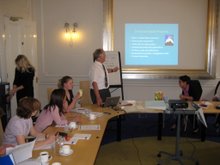
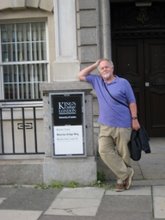


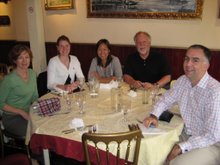
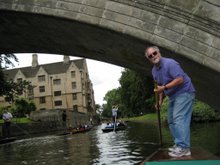
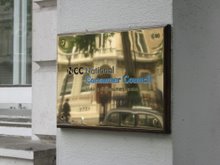
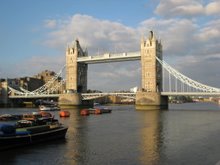
No comments:
Post a Comment